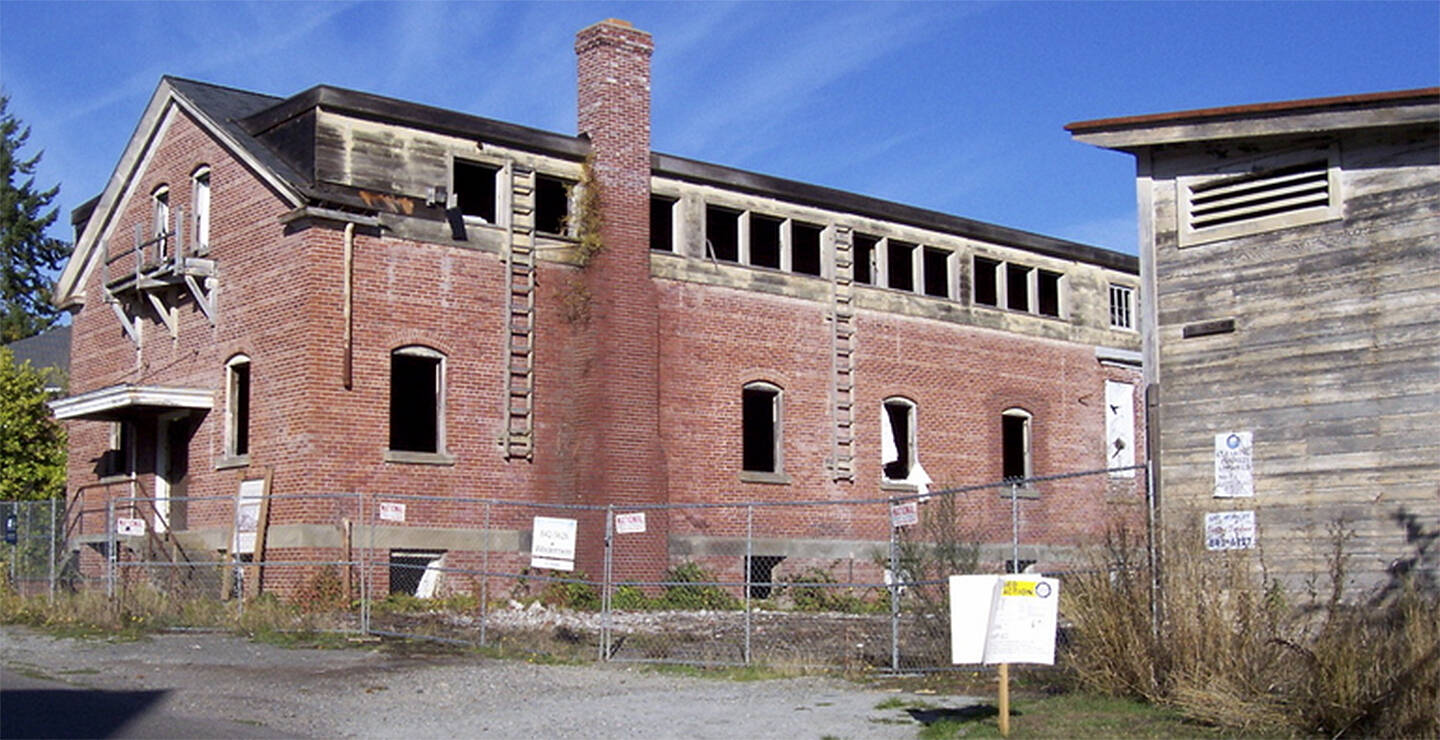A local company wants to put an architecture business and school where the old stable is at Fort Ward.
The Bainbridge Island Design Review Board signed off on the Fort Ward Stables Renovation Monday. It now goes to the BI Planning Commission.
In general DRB members appreciated how Jason McLennan of McLennan Design is respecting the history of the area. The back and two sides of the building will use existing lumber, but it will be painted. “We will use as much of the current structure as possible,” McLennan said.
The front will have a more modern look, with all windows. However, their narrow and tall appearance gives the look of a bunch of stalls. “The windows are where there were openings for horses and carriages,” he said, adding his company does a lot of historic preservation projects like this all over.
The roof also is modern with solar panels that will provide the facility with all of its energy. The new facility will be built in the same footprint as the original one.
The DRB also liked that site damage will be minimal at the former military installation. Few trees will be removed, little grading, etc. The only thing that will be removed is the “blackberry bushes that keep coming back every month and a half,” McLennan joked. Landscaping will preserve the island’s forested character.
Outdoor lighting will be shielded and aimed downward. “Lighting will be less than any of the houses around it,” McLennan said. Rainwater will be collected and used in rain gardens, so water runoff will be less than before, he added.
“The overall proposed project development will clean up the project site and greatly improve the community,” a SEPA checklist says, adding there should be no issues with noise, odors, erosion or other potential problems that often come up during developments.
Joseph Dunstan, DRB chairman, said he was disappointed the project no longer includes a cafe. “I’ll say one more time food always helps.” When McLennan said future improvements could include a community garden Dunstan supported that. “I like the idea of an edible landscape,” he said.
In the future, McLennan will back hoping to expand the project to the old barracks next door, which is on the National Register of Historic Places. McLennan said they’re still trying to raise money to “restore that to its former glory.”
Dunstan also liked the idea of a community gathering place between the two buildings. It includes a courtyard and boardwalk.
While most of the DRB was gushing over the project, Michael Loverich said he would like the front to look a little less commercial. He said older-style windows would help. “This is when the fun of design really comes in,” he said.
Ashley Mathews suggested the company reach out to local horses clubs for decorative items like bridles. That would add some “horse sense to life” there, she suggested. Developers seemed to like that idea.
The nonprofit School of Regenerative Design will offer an internship model to graduate-level and professional design students with a bachelor’s degree, as well as to professionals in the field of architecture, engineering and design. The mission is to “transform the practice of architecture, design, planning, landscape and interiors through teaching graduate-level students and returning practitioners in a unique, holistic, interdisciplinary approach, that equips them with a new way of thinking, appropriate to deal with the social and ecological challenges of the Anthropocene.”
Education is more meaningful, and information is better retained when students are able to work on real-life projects under the direction of working practitioners, papers say. Through the development of prototypes and model-making, students will learn the importance of quality, craft, beauty and design, they add.
McLennan Design will continue to function as an architectural office, and the practice will provide the space to allow students to succeed through a practical, knowledge-based internship grounded in world-class design and deep green ecological transformation. The outdoor courtyard will be an activated space for students and practitioners to create opportunities for interaction and collaboration. Spaces will be open to the Fort Ward neighborhood for community engagement, papers say.
McLennan said they hope to start the transformation this year. “It’s been a long, drawn-out process due to the (COVID-19) pandemic,” he said.



